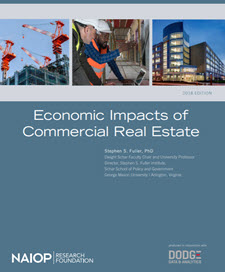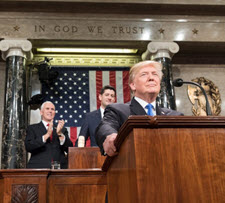A Dec. 4 report by Heritage Foundation Economist Stephen Moore finds that “promoting and facilitating foreign tourism to the United States can be an effective way to increase American jobs and national output while reducing the nation’s trade deficit.”
 |
|
According to Tourism to the U.S. Means More Growth, More Jobs, Lower Trade Deficit by Stephen Moore, when international travelers visit the United States, their spending at hotels, retail stores, attraction properties and restaurants totals nearly $250 billion per year. This economic activity supports approximately 1.2 million U.S. jobs and at least $30 billion in worker pay and benefits. |
- Moore advised President Trump during the 2016 campaign and worked closely with Larry Kudlow, now the chief White House economic adviser. (Washington Examiner, Dec. 4)
- Moore’s analysis shows the impact of foreign travel on the U.S. economy and how the growth rate of visitor spending in the U.S. has fallen in comparison to other nations in recent years.
- According to the report, when international travelers visit the United States, their spending at hotels, retail stores, attraction properties and restaurants totals nearly $250 billion per year. This economic activity supports approximately 1.2 million U.S. jobs and at least $30 billion in worker pay and benefits.
- The report also shows that tourism from abroad lowers the trade deficit. In 2017, international tourism generated a $77 billion trade surplus — more than any other industry except for financial services — which reduces the U.S. overall trade deficit by an equivalent amount. (Tourism to the U.S. Means More Growth, More Jobs, Lower Trade Deficit by Stephen Moore)
- The Roundtable is part of the Visit U.S. coalition, which advocates for reauthorization of the Brand USA program — a public-private partnership that markets the United States as a travel destination to international travelers. The Roundtable joined a coalition of nearly 600 organizations last week in a letter urging Congress to pass legislation that puts Brand USA funding at risk. (Roundtable Weekly, Nov. 30)
- Today, Brand USA operates at a 29:1 return on investment-a program with undeniable economic benefits at no cost to the taxpayer. If Congress does not renew Brand USA this year, $17.7 billion in visitor spending, $5 billion in tax revenue, and 51,000 American jobs generated are at risk. (Return On Investment Analysis, Oxford Economics and Visit U.S. Letter to Congressional Leadership, Nov. 30)
The economic importance of foreign travel and tourism to the United States’ economy and commercial real estate industry was the focus of a panel discussion during The Roundtable’s 2018 Annual Meeting. (Roundtable Weekly, June 15, 2018).



